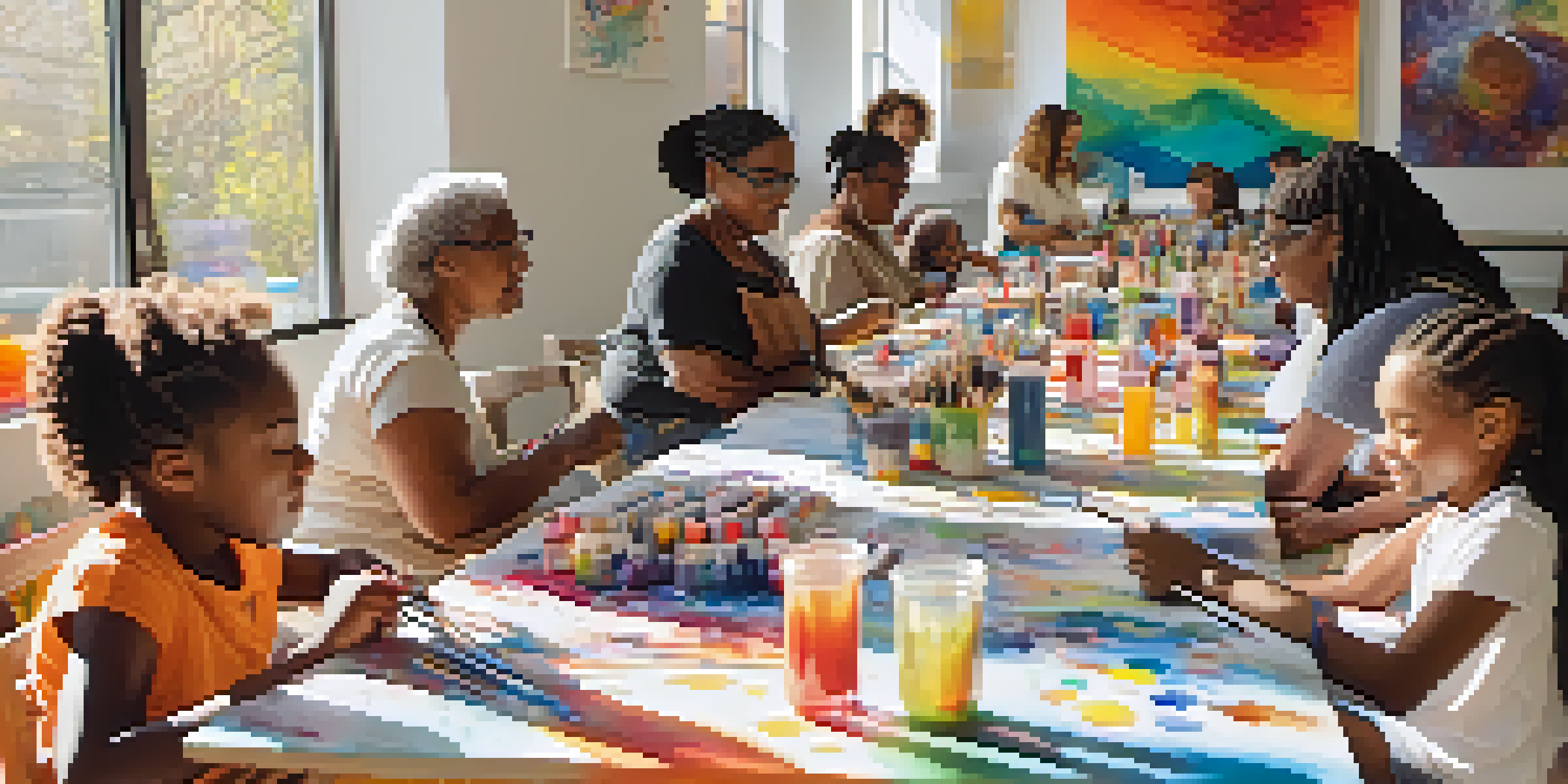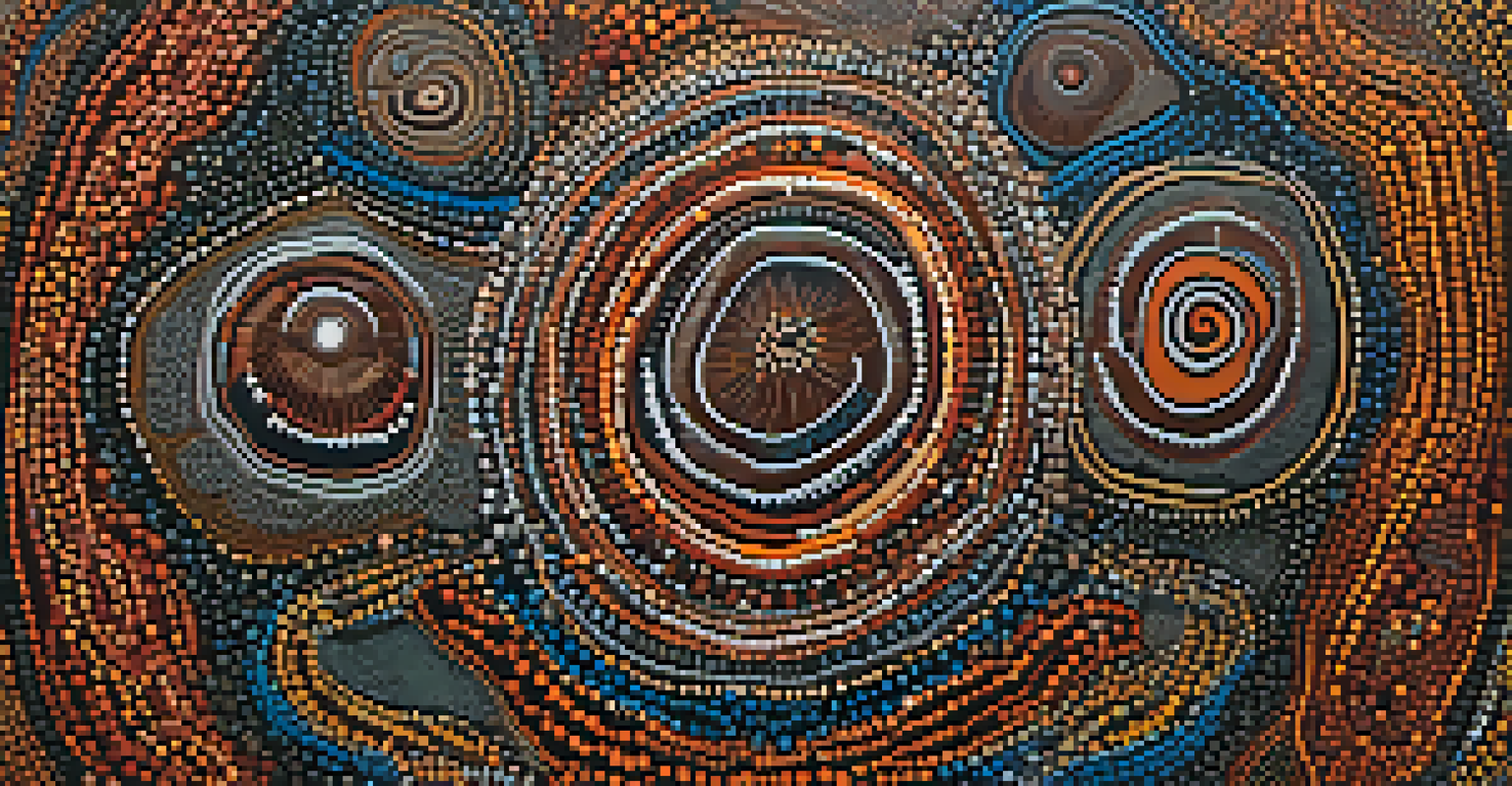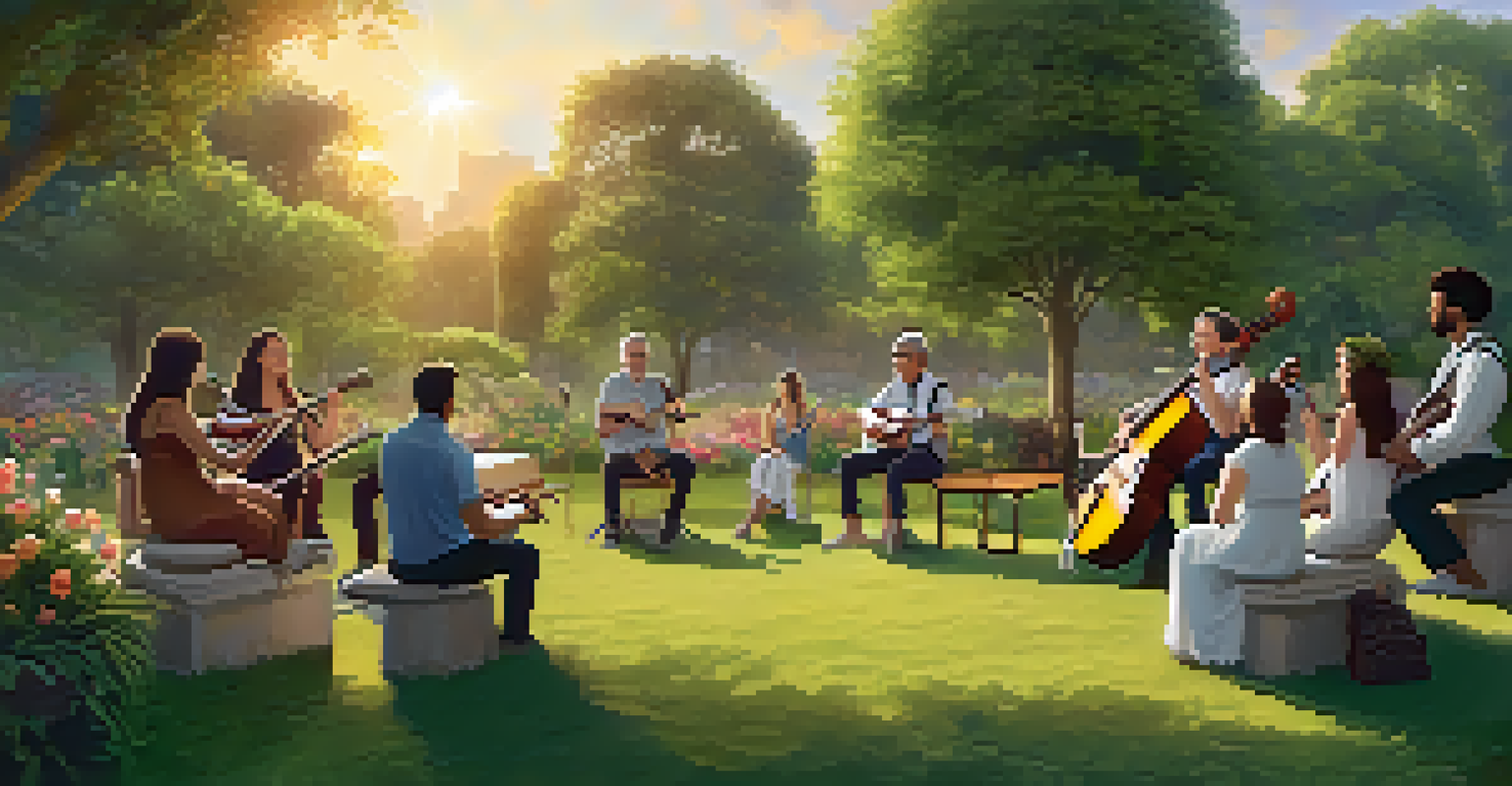The Connection Between Art and Mental Health in Different Cultures

The Universal Language of Art and Emotion
Art serves as a universal language, transcending cultural barriers to express emotions. Whether it's a painting, a sculpture, or a dance performance, art allows individuals to communicate feelings that may be hard to articulate in words. This connection plays a vital role in promoting mental well-being, as it offers a safe space to explore complex emotions.
Art enables us to find ourselves and lose ourselves at the same time.
Different cultures utilize various art forms to express mental states, from the vibrant colors of African textiles to the intricate designs of Japanese calligraphy. Each art form reflects cultural values and perspectives on mental health, making it a rich area for exploration. By engaging with art, individuals can find solace and connection, fostering a sense of belonging.
Moreover, art can serve as a therapeutic outlet, helping people process their experiences. For instance, art therapy is recognized worldwide as a powerful method for healing, allowing individuals to confront trauma and express their innermost thoughts creatively. This aspect highlights art's capacity not only to connect but also to heal.
Art Therapy: A Global Phenomenon
Art therapy has gained recognition as a valuable tool for mental health treatment across various cultures. This therapeutic approach enables individuals to express themselves through creative means, which can be particularly beneficial for those who struggle with verbal communication. It has been embraced in settings from hospitals to community centers, demonstrating its versatility and effectiveness.

In countries like the United States, art therapy is often integrated into mental health programs, providing a structured environment where people can explore their feelings through art. Meanwhile, in cultures like India, traditional art forms such as Rangoli are used in therapeutic settings, showcasing the blend of cultural practices and modern psychological insights. This adaptability speaks to art's intrinsic ability to resonate with diverse populations.
Art as a Tool for Healing
Art therapy provides a creative outlet for individuals to express emotions and process trauma, promoting mental well-being.
Moreover, the impact of art therapy extends beyond individual healing; it can foster community connections. Group art therapy sessions encourage collaboration and shared experiences, breaking down barriers and creating a supportive environment. This communal aspect is particularly significant in cultures where communal ties are strong, enhancing overall mental health.
Cultural Perspectives on Mental Health and Art
Cultural perspectives on mental health significantly influence how art is perceived and utilized. In Western cultures, mental health is increasingly regarded as a critical component of overall well-being, leading to a more open dialogue about its challenges. Consequently, art is often viewed as a valuable resource for understanding and processing mental health issues.
Creativity takes courage.
Conversely, in some Eastern cultures, mental health may still carry a stigma, leading to a more subdued approach to discussing emotional struggles. However, traditional art forms, like Chinese ink painting, have long been associated with mindfulness and emotional balance, offering a unique means of coping. This demonstrates how art can bridge gaps in understanding and acceptance regarding mental health.
These differing perspectives underscore the importance of context in art's role in mental health. By acknowledging cultural nuances, we can appreciate how art serves not only as a form of expression but also as a tool for promoting mental wellness. This appreciation encourages a more inclusive conversation about mental health across cultures.
Healing Through Indigenous Art Forms
Indigenous cultures around the world often incorporate art into their healing practices, reflecting a deep connection between creativity and mental health. For instance, Native American traditions use storytelling and visual art as ways to convey experiences and foster community healing. These practices emphasize the importance of cultural heritage in maintaining mental well-being.
Similarly, Aboriginal Australians utilize art to express their connection to land, spirituality, and identity, serving as a powerful tool for mental health. The act of creating art becomes a communal ritual, reinforcing social bonds and enhancing individual resilience. This highlights how indigenous art forms not only preserve cultural identity but also foster mental health.
Cultural Impact on Art and Mental Health
Different cultural perspectives shape how art is utilized in mental health, showcasing diverse approaches to emotional expression.
Furthermore, these art practices often include elements of spirituality, recognizing the holistic nature of health. By integrating art into healing, indigenous cultures showcase a profound understanding of the interconnectedness between mind, body, and spirit. This approach encourages us to rethink mental health through a more inclusive and diverse lens.
The Role of Music in Mental Health Across Cultures
Music is another powerful art form that significantly impacts mental health worldwide. In many cultures, music serves as a form of expression and connection, allowing individuals to convey emotions that may be difficult to articulate. From the rhythmic beats of African drumming to the soothing melodies of Indian classical music, each style offers a unique avenue for emotional exploration.
Research has shown that music can evoke strong emotional responses and even improve mental health outcomes. For instance, community music therapy programs have been implemented in various countries, demonstrating music's ability to foster connection and healing. This global appreciation of music underscores its importance in supporting mental well-being across diverse cultures.
Moreover, communal music-making activities, such as traditional festivals or group singing, create a sense of belonging that is crucial for mental health. These shared experiences not only uplift spirits but also strengthen social ties, promoting a collective approach to well-being. Thus, music acts as a bridge, linking individuals to their communities and enhancing overall mental health.
Artistic Expression in Times of Crisis
Art often emerges as a vital outlet during times of crisis, reflecting the emotional turmoil experienced by individuals and communities alike. In various cultures, art has been utilized to process collective trauma, as seen during events like war or natural disasters. Artists become storytellers, using their craft to convey the struggles and resilience of their communities.
For example, during the COVID-19 pandemic, artists worldwide turned to their mediums to express feelings of isolation, fear, and hope. From murals on city streets to virtual performances, creative expressions became a source of solace and connection, demonstrating art's power to heal. This phenomenon highlights the resilience of human spirit through creativity in challenging times.
Music's Role in Mental Wellness
Music fosters emotional connection and healing through communal experiences, enhancing mental health across various cultures.
Furthermore, these artistic responses can foster awareness and initiate conversations about mental health in society. By showcasing personal and communal experiences through art, individuals can find validation and understanding. This collective narrative not only aids in healing but also encourages a more open dialogue about mental health challenges.
Future Directions: Integrating Art and Mental Health
As we continue to recognize the connection between art and mental health, future directions should focus on integrating these fields more deeply. Collaborative initiatives between artists, mental health professionals, and communities can create innovative programs that promote healing through creativity. This partnership can lead to tailored approaches that resonate with diverse cultural backgrounds.
Additionally, incorporating art into mental health education can help break down stigmas and foster understanding. By teaching individuals about the therapeutic benefits of art from an early age, we can equip future generations with tools to navigate their emotional landscapes. This proactive approach can create a more compassionate society.

Lastly, leveraging technology can enhance access to art therapy and mental health resources. Online platforms that connect individuals with artistic tools and mental health support can reach those who may not have access otherwise. Embracing these advancements will ensure that the healing power of art continues to be accessible to all, regardless of cultural or geographical barriers.